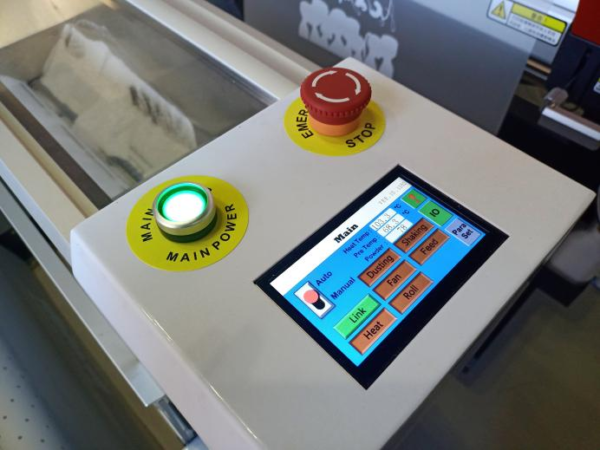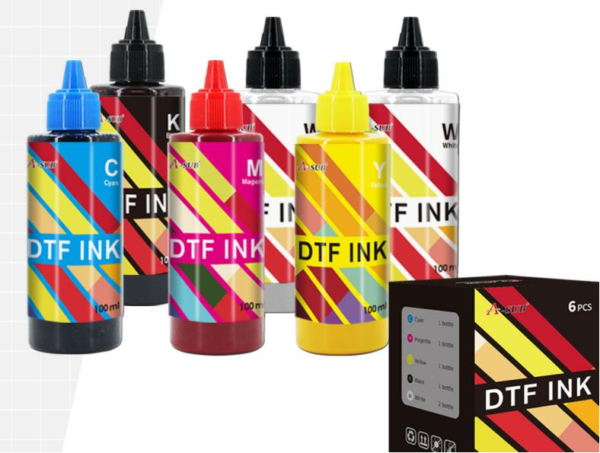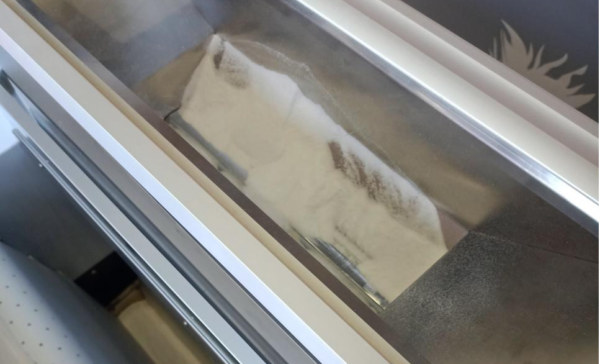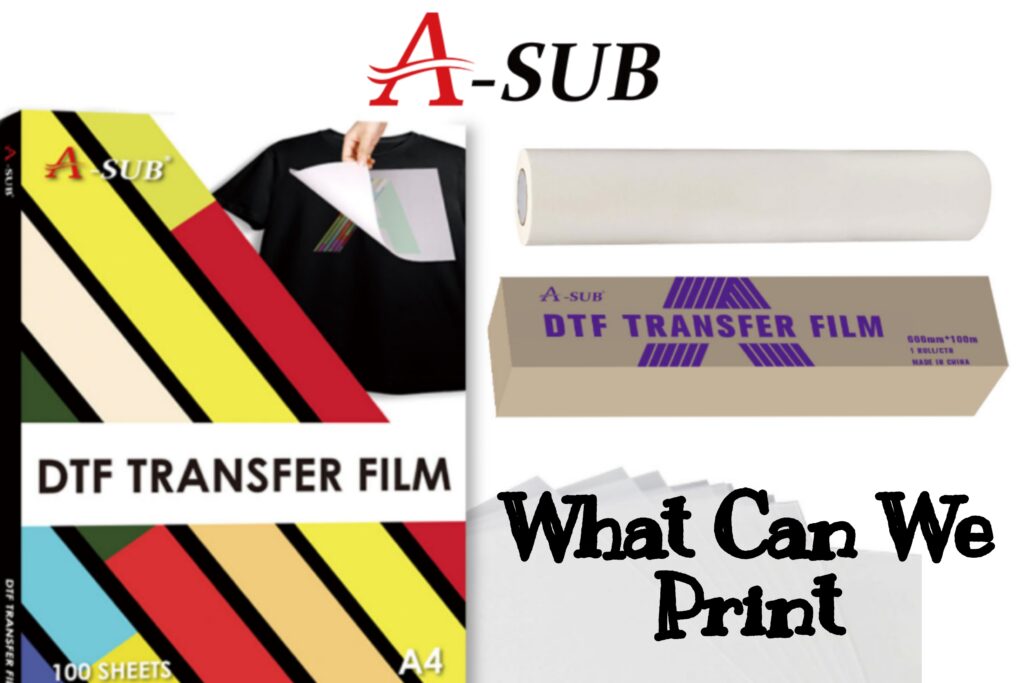Before reading this article, you may be already learned some about DTF. But after knowing more information about DTF solution, you must be interested in the substrates which can be printed on and why the substrates can be printed on. This article is written to provide a more detailed introduction to the substrates of DTF. Next, let’s dive in.
Brief Introduction to DTF
Nowadays, DTF is a brand-new operation which used to print patterns on many kinds of substrates. Of course, it has a high population among the manufacturers because of its broad availability to the substrates. What’s more, it has more advantages when compared with other operations like sublimation and water-slide decal. Many manufacturers are interested in DTF and want to try this new product.
What Can We Print With DTF?

DTF film can be used on many kinds of substrates. It is different from sublimation paper, waterslide decal paper, and T-shirt transfer paper. DTF film can print with more different kinds of textile substrates, including leather resistant to high temperatures. Thus, the DTF film can heat transfer on handbags, wallets, and suitcases which are made of leather resistant to high temperatures, too.
● Clothing
DTF can print on any clothing even on cotton fabric. The DTF film can be applied to the most common textile materials, such as cotton, nylon, polyester, etc. The DTF film can be transferred to any garment by means of a powder, which has sufficient adhesion as a film. Thus, it can firmly adhere the pattern to the surface of the garment. Moreover, the DTF transfer pattern has excellent rub resistance and fastness. As a result, rubbing and cleaning soft substrates will not damage the integrity of the pattern.
● The Other Substrates
The other substrates include leather which is resistant to elevated temperature. DTF films can print on the substrates more easily than normal heat transfer paper. The powder helps to stick the patterns and the cover of substrates together. Different substrates can use different special heat presses. For DTF films, the stamping equipment can be used universally.
Why Can We Print These Substrates With DTF?
You must don’t know why we can print these substrates with DTF. The powder that was referred to before is only a part of the reasons. Follow me and learn the secrets of the process of the DTF solution.
● Transfer Principle
The excellence of the DTF transfer is partly due to the special printing effect. Firstly, only the printed part of the pattern possesses adhesion. Secondly, the powder is only applied to the part of the pattern that has adhesion. Thirdly, the pattern is baked in the oven so that the powder melts into a film. Finally, the substrate and the pattern are transferred by using a heat transfer machine. In this way, the DTF transfer is completed.

By the way, in this process, it should be noted that after printing the pattern must be immediately shaken powder processing. Otherwise, the pattern will lose adhesion. Therefore, we recommend you buy and use the special operation all-in-one machine to make the operation easier and more efficient. If you want to know more about the all-in-one machine, you can click this article to learn more. This kind of all-in-one machine can save time and process to a large extent. Also, you should not prepare a printer and oven especially. You can finish the printing and powder shaking easily. This all-in-one machine helps the process of producing be more stable without skew.
● Original Color of Substrates

There is a difference between DTF printing and other kinds of printing. That is its white ink. The DTF ink has extra white ink to print the bottom of the pattern. The white ink visually separates the substrate base color from the pattern, making the pattern more distinct.
Physically, the white ink also prevents the substrate base color from penetrating the pattern. Compared with sublimation paper, white ink is one of the biggest advantages. What’s more, the DTF solution doesn’t need to worry about the ability to lock the ink of the fabrics like cotton.
DTF Operations

First of all, we need to prepare all the materials and machines referred to before. And we should modify the nozzle of the printer before we print the patterns. The modified nozzle can ensure the high quality of the printing. After printing, we need to fully spray the powder on average right now after printing and shake the over-sprayed powder down.
Thirdly, put the film into the oven to heat the powder on it at 140℃-150℃ for 3-5 minutes. Don’t forget to preheat the oven before you heat it. Or we can use an all-in-one machine to print, spray and melt the powder together.

Finally, use the heat press to heat transfer the image for 10-20 seconds. Preheating the heat press at 160℃-170℃ helps the image be transferred to the substrates better. Moreover, the DTF film can be peeled both at high and low temperatures. Although DTF films support hot and cold peeling, please be aware of the hotness when peeling, we suggest you wait for it to cool down and press it for a while to make the image strongly connected to the textile itself.
Conclusion
After reading this article, you will clear the availability of the substrates of the DTF film. DTF film can print with more different kinds of textile substrates, including leather resistant to high temperatures. DTF was developed mainly for textiles. Thus, we also recommend that you use DTF to transfer your garments, which will save you a lot of time and increase your efficiency. We also recommend that you purchase an all-in-one machine to further speed up the transfer process. If you are interested in DTF and related products, please feel free to contact us. We will provide you with the most timely answers and the most complete service. Thank you for reading here.






